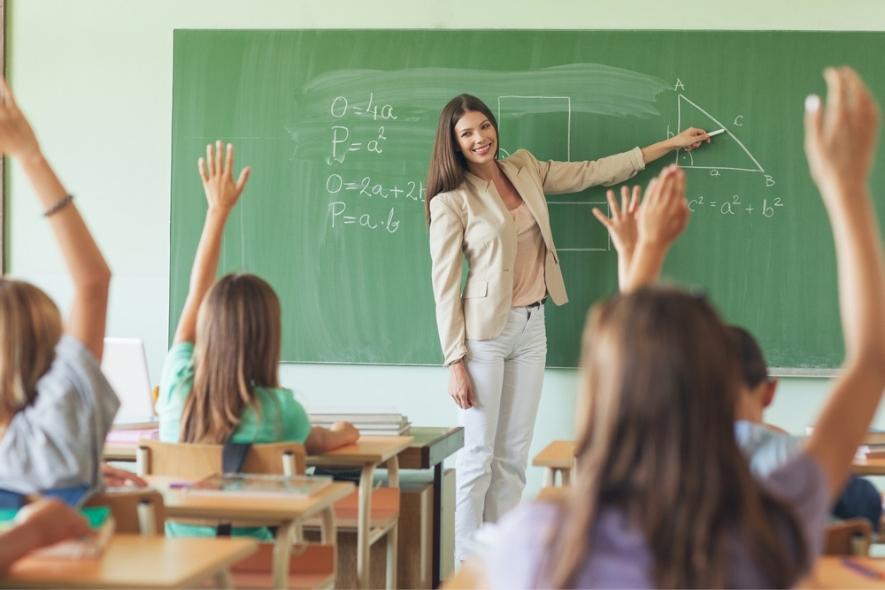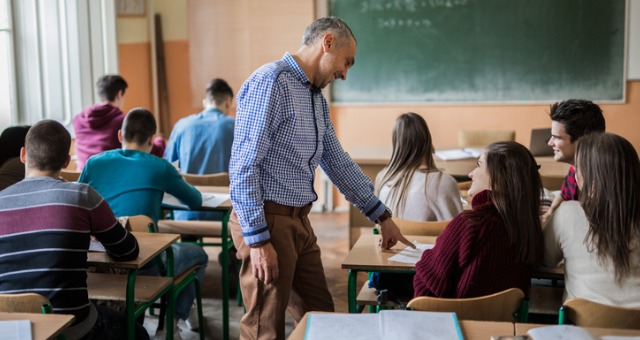Expert Tutors Offering Primary Science Tuition Singapore for All Grades
Expert Tutors Offering Primary Science Tuition Singapore for All Grades
Blog Article
A Comprehensive Guide to the Different Learning Methods in Main Scientific Research Instruction
The expedition of varied learning techniques in primary scientific research instruction offers a possibility for teachers to boost student engagement and comprehension dramatically. By taking a look at hands-on discovering techniques, inquiry-based strategies, and joint strategies, we can recognize efficient practices that satisfy different finding out styles. Furthermore, the combination of innovation and set apart instruction plays an important role in cultivating an inclusive environment. The inquiry remains: just how can these methods be efficiently applied in the classroom to maximize their effect? The response exists in a more detailed examination of each strategy and its implications for mentor scientific research.

Hands-On Knowing Methods
Hands-on discovering strategies play a crucial function in key scientific research guideline, involving pupils in energetic exploration and trial and error. These techniques enable learners to interact directly with phenomena and products, cultivating a much deeper understanding of clinical ideas. By utilizing manipulatives, versions, and real-life experiments, instructors produce an atmosphere where pupils can observe, assume, and test their ideas.
Such techniques not only improve understanding yet additionally grow crucial reasoning and analytic abilities. When pupils take part in activities like building straightforward makers, growing seeds, or carrying out chain reactions, they are motivated to ask inquiries and look for answers via their very own observations. This experiential approach helps to demystify complicated clinical principles, making them much more relatable and accessible.
In addition, hands-on knowing advertises collaboration amongst peers, as pupils often operate in teams to conduct experiments or share findings. This teamwork not just enhances their learning experience yet additionally establishes necessary social skills. Eventually, integrating hands-on methods in key science instruction promotes a lifelong love of discovering and interest concerning the all-natural world, laying a strong structure for future academic pursuits in science and beyond.
Inquiry-Based Knowing
Inquiry-based discovering is an instructional approach that urges trainees to ask concerns, explore phenomena, and build their very own understanding of clinical principles. This method changes the focus from standard teacher-led instruction to a much more student-centered experience, where students take the effort in their educational journey. By cultivating curiosity, inquiry-based understanding advertises deeper engagement with the product, allowing students to check out topics in a meaningful context.
In practice, this approach often entails hands-on experiments, observations, and critical thinking tasks that line up very closely with the scientific approach. Trainees are urged to develop theories, design investigations, and assess data, which grows important abilities such as problem-solving and analytical reasoning. The role of the teacher in this structure is to promote exploration, assisting students through the query process while motivating independent idea and collaboration.
Additionally, inquiry-based discovering supports a sense of possession over the knowing process, encouraging pupils to seek expertise actively. This technique not just improves understanding of clinical principles yet additionally cultivates a long-lasting love for understanding, furnishing students with the abilities necessary to navigate a significantly complex globe.
Collaborative Learning Approaches
Collaborative learning approaches encourage trainees to involve in purposeful interactions with peers, cultivating a common obligation for their academic end results. In main science direction, these methods encourage learners to interact to check out clinical concepts, fix problems, and carry out experiments (primary science tuition Singapore). By taking part in group tasks, students can leverage varied viewpoints, permitting richer understanding and retention of clinical expertise
One secret facet of collaborative knowing is the focus on communication skills. Trainees must express their ideas, listen actively to others, and work out concepts, all of which are vital competencies in both real-world and academic contexts. This social communication not just enhances their understanding of scientific principles but additionally advertises teamwork and conflict resolution skills.
Moreover, collaborative discovering usually leads to raised inspiration and engagement. When students see the value of their contributions within a group, they are more most look at here now likely to take ownership of their discovering journey. Educators can facilitate this process deliberately organized team jobs that align with curriculum goals while providing assistance on effective cooperation techniques. In general, integrating collective discovering methods in key science direction grows a vibrant learning atmosphere that prepares trainees for future scholastic and social difficulties.
Modern Technology Integration in Science
The combination of modern technology in main science direction boosts discovering experiences by providing cutting-edge devices and sources that support various mentor techniques, consisting of joint understanding - primary science tuition Singapore. The use of digital systems, simulations, and interactive applications allows trainees to engage deeply with clinical concepts, facilitating a more hands-on approach to understanding
Online laboratories, for instance, allow students to carry out Continued experiments securely and effectively, advertising inquiry-based understanding. These tools can replicate real-world clinical situations, permitting students to visualize intricate procedures that would certainly be tough to duplicate in a standard class setting. Innovation promotes communication and collaboration among students, as they can share searchings for and function together on projects with on the internet systems.
In addition, multimedia presentations and educational videos can enhance lessons by satisfying varied discovering designs, making abstract concepts a lot more accessible. Information evaluation devices likewise empower students to gather and translate scientific data, strengthening critical assuming skills. In general, the critical consolidation of modern technology in main scientific research instruction not only improves interaction however likewise prepares trainees for a technologically innovative culture, furnishing them with vital abilities for future clinical ventures.
Set Apart Instruction Methods
Distinguished guideline techniques are essential for attending to the varied requirements of learners in main scientific research education and learning. These approaches make it possible for teachers to tailor their teaching methods to suit varying capabilities, passions, and learning designs within the class. By using separated instruction, instructors can create a comprehensive atmosphere that fosters engagement and boosts understanding of clinical concepts.
One efficient method is to utilize versatile grouping, which allows pupils to work together with peers at similar ability levels or with varying point of views. This strategy encourages peer learning and advertises important thinking. Furthermore, using choices in jobs can empower students, enabling them to choose jobs that resonate with their rate of interests while still meeting curricular objectives.
Additionally, including tiered tasks is an additional important method. Deliberately jobs with differing degrees of complexity, educators can ensure that all pupils are appropriately tested, no matter their proficiency. Utilizing formative assessments to evaluate recognizing additional allows teachers to change their training techniques dynamically, guaranteeing that each learner obtains the support they require.
Ultimately, executing differentiated instruction methods in main scientific research education not only enhances student understanding outcomes but likewise straight from the source grows an enthusiasm for scientific research, preparing pupils for future scholastic pursuits.

Conclusion
In summary, reliable primary science direction necessitates a complex technique that includes hands-on knowing, inquiry-based techniques, and collective strategies. The integration of innovation and distinguished instruction additionally caters to diverse discovering styles, promoting a setting favorable to exploration and critical thinking.
The exploration of diverse knowing techniques in primary scientific research instruction provides a chance for educators to improve pupil engagement and comprehension substantially.Hands-on understanding methods play a crucial duty in key scientific research guideline, engaging pupils in energetic exploration and testing.Inquiry-based discovering is an educational strategy that urges pupils to ask concerns, examine sensations, and build their own understanding of clinical principles.Joint learning techniques encourage students to involve in meaningful interactions with peers, promoting a common obligation for their instructional outcomes. On the whole, integrating collaborative understanding approaches in primary scientific research instruction grows a vibrant knowing environment that prepares students for future scholastic and social obstacles.
Report this page